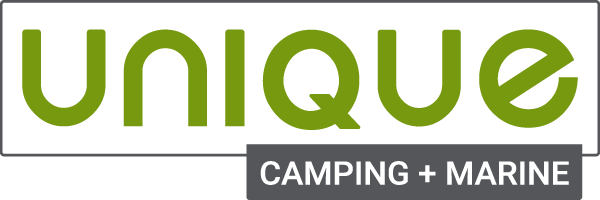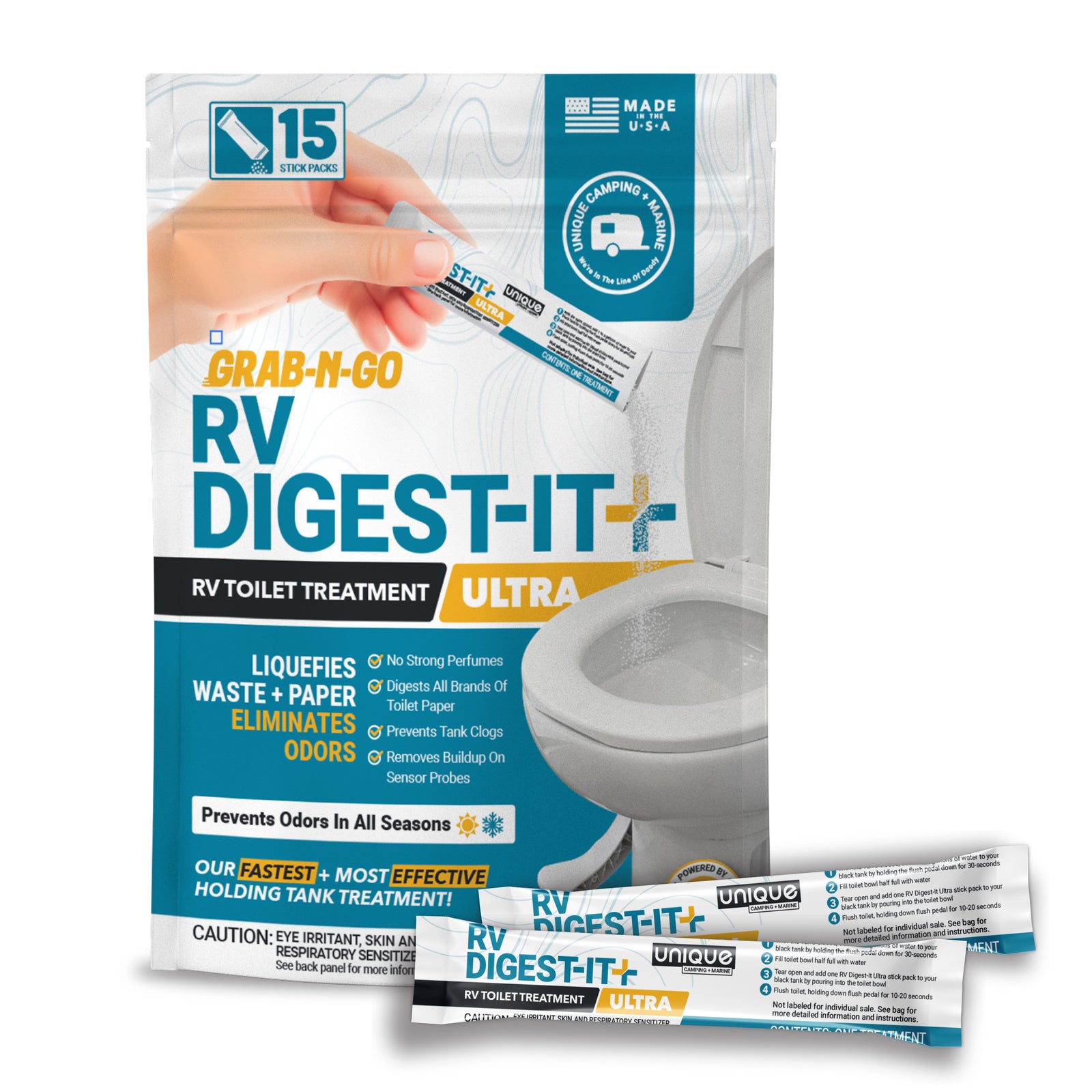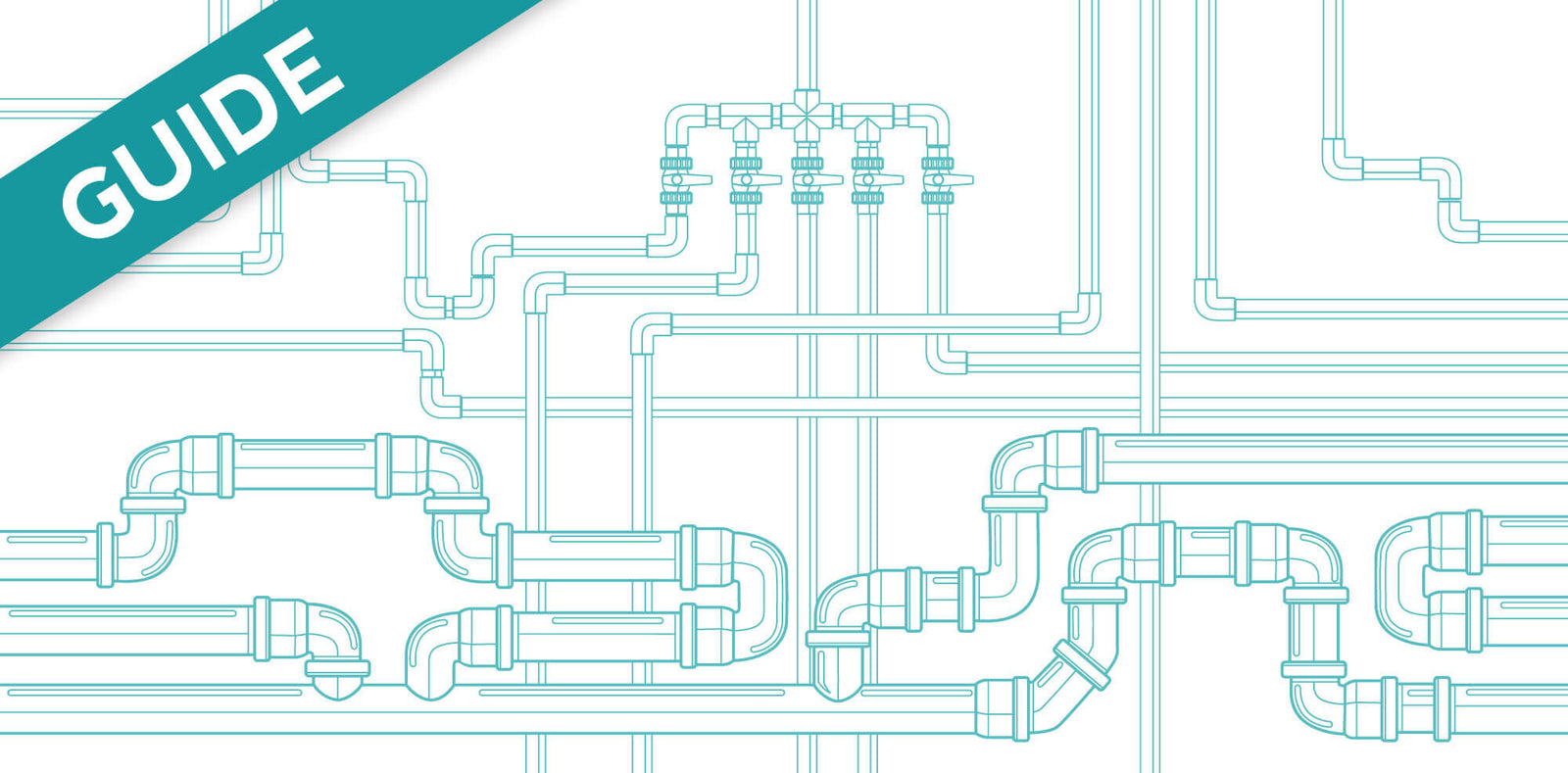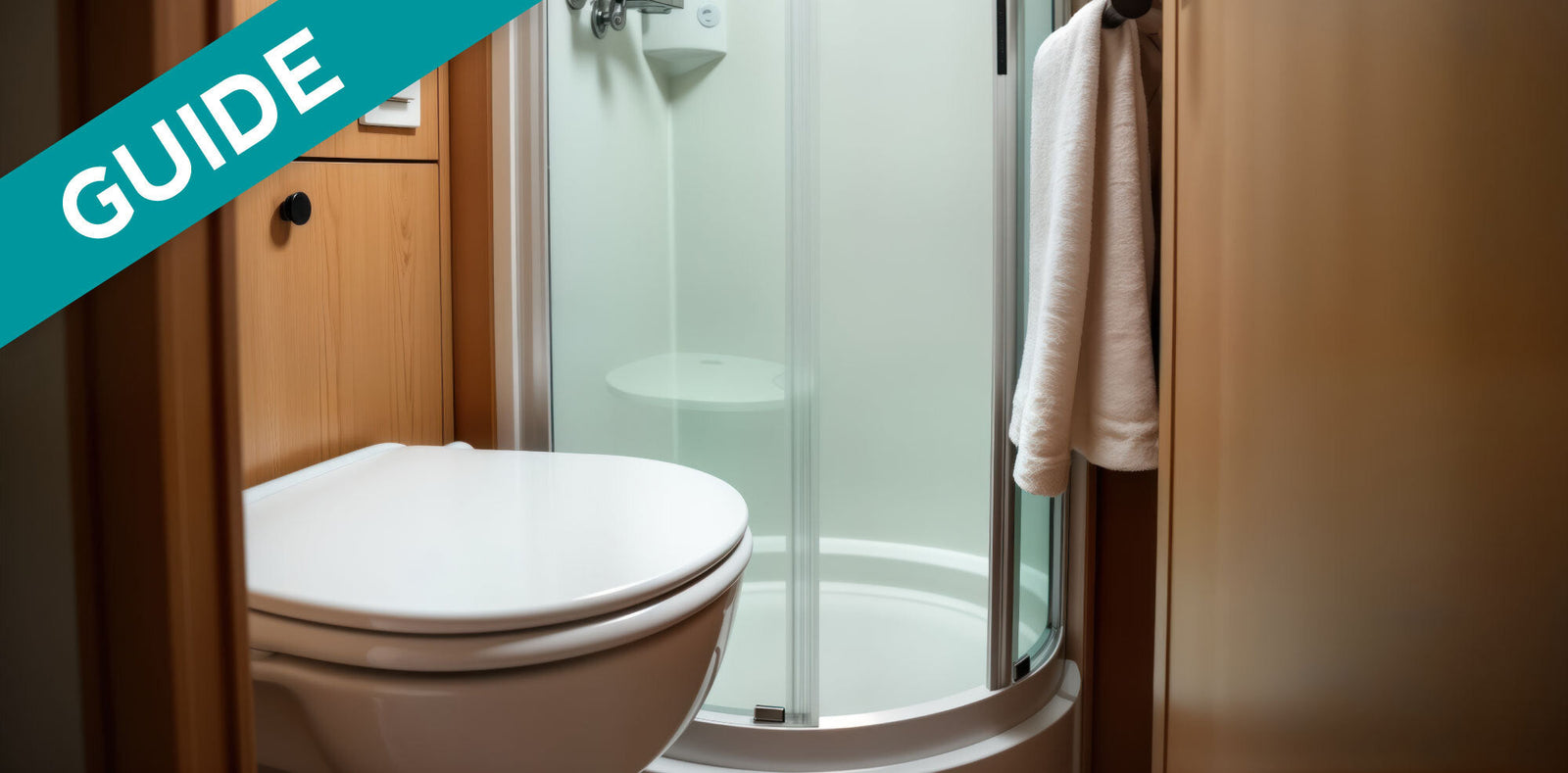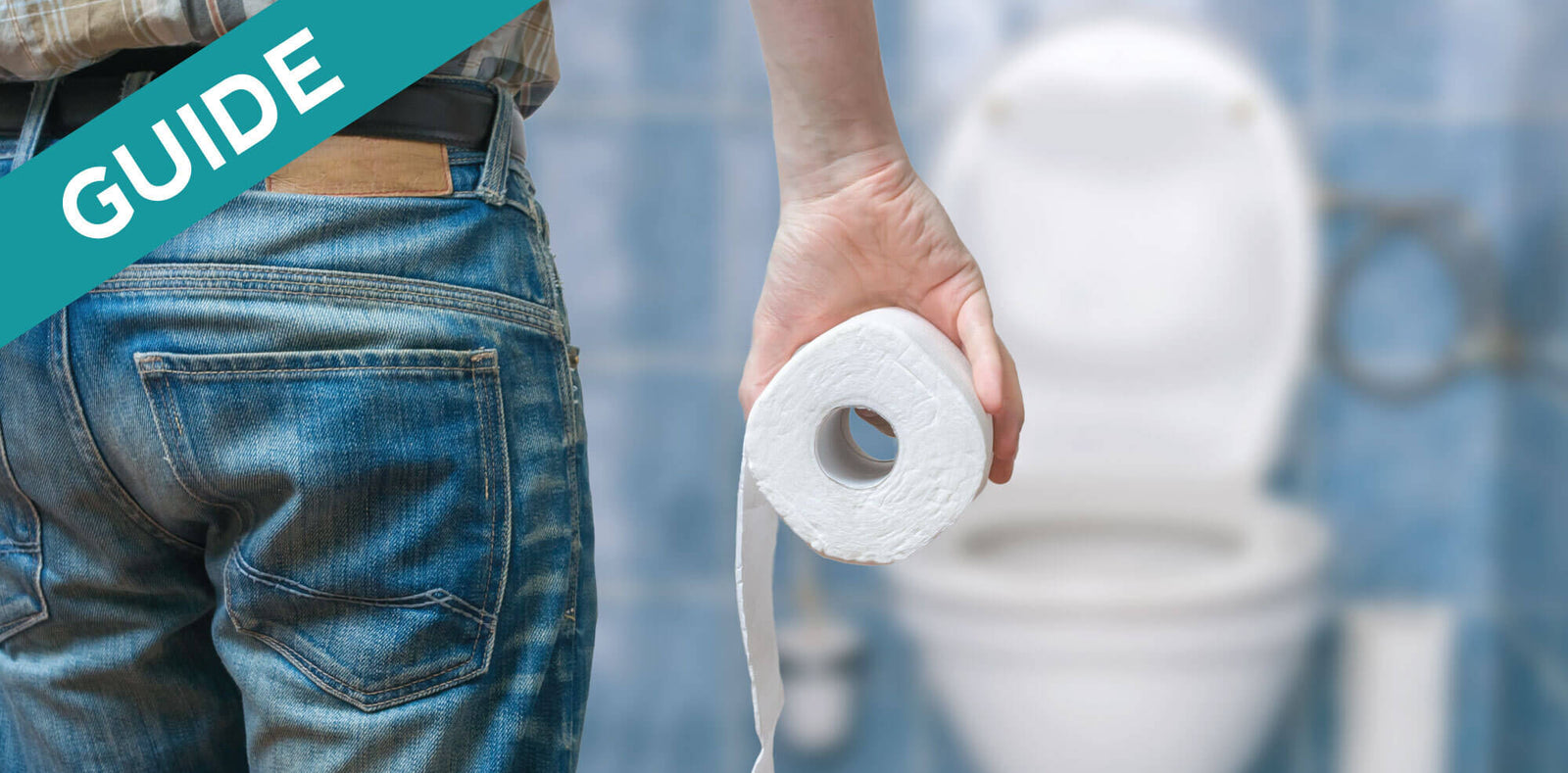
Key Points:
- Only allow human waste, toilet paper, and tank treatments into your black water tank.
- Try to prevent as much food waste and grease as possible from getting into your gray water tank.
- Chemical tank treatments and cleaners are not recommended.
Decisions, decisions. Should you flush this or that into your RV black water tank? Should you allow the leftovers of that dinner concoction into your gray water tank? If you're a seasoned pro or even an amateur RVer, you know what you allow into your RV wastewater tanks has a big impact on how well you can prevent holding tank clogs and odors. And it’s likely you know this because you’ve made the mistake and learned your lesson the hard way. The good news is that if you have not had that issue yet, you don’t have to experience the clogs and odors to learn the habits necessary to avoid problems.
Following The Unique Method is a proven process we created to help you be as successful as possible in maintaining a problem-free RV. It is a 50/50 approach that requires 50 percent the right products and 50 percent the right habits. One of the habits The Unique Method advises is to be picky about what you are willing to allow into your RV holding tanks. If you are newer to RVing, figuring out what is and isn’t okay to flush can cause anxiety, something you don’t want while relaxing in the great outdoors. You can kick that anxiety to the curb because we will thoroughly cover what types of items you should and should not allow in your wastewater tanks as well as the type of chemicals and products that are beneficial or could be damaging to your holding tanks.
Understanding Your RV Wastewater Systems
Your RV contains both a black water system (human waste and toilet paper) and a gray water system (shower and sink water) or a combo tank to house both types of wastewater. These wastewater holding tanks can be very sensitive to what is put in them. They are not septic tanks; they are just repositories for wastewater to chill until you get a chance to dump the tanks. Septic systems hold more waste and usually have weeks or months to break down and digest solids, fats, oils, and grease, whereas RV holding tanks usually only hold waste for maybe a week. You’re the one dumping the tanks, not some septic company that comes out every few months and does the dirty work, so the pickier you are about what goes in there, the easier your job will be.
Maintaining these systems and keeping them completely free of odors and clogs is actually pretty simple. Let's briefly cover the basic function of each tank type and what items should and shouldn't be allowed inside them.
Black Water Tanks
The black water holding tank is connected to the toilet and it’s where all the human waste is stored. There are actually only a few things that should be allowed inside your RV black tank:
- Human feces and urine
- Toilet paper
- Water
- RV Holding Tank Treatments (preferably treatments free of chemicals)
Anything other than that can and often will cause issues. These unacceptable items include:
Trash and plastics
Items like paper plates, gum, discarded food, plastic wrappers and other things we would all consider trash should not be flushed down your RV toilet, or even your home toilet for that matter. None of these items are meant to break down and they will certainly cause a blockage when you go to dump the tank.
Chemicals and caustic cleaners
If you use chemical-based tank treatments and cleaners, that’s your choice, but we highly recommend that you stay away from these and instead opt for bacteria-based tank treatments and cleaners that will not kill the beneficial bacteria. Bacterial treatments are the best way to control odors and ensure adequate waste breakdown; chemicals from a treatment or a bathroom cleaning product will kill the bacteria performing this dual function. For more information on why bacteria is such a good thing in your tanks, refer to the Why Are Bacteria and Enzymes Good in RV Wastewater Tanks guide.
Feminine hygiene products
Ladies out there...we all know it’s a no-no to flush maxi pads, but who out there hasn’t flushed a tampon? Well guess what, those should not be flushed down any toilet, RV or otherwise. They are made to absorb liquid, not be broken down by it, so flushing a tampon in any toilet will lead to damage and clogs. Opt for wrapping it in toilet paper like you do a maxi pad and toss it in the trash.
Flushable wipes
The name suggests it will break down once it’s flushed, right? Not necessarily. When given lots of time, they will eventually break down, but they will not remain in the holding tanks, septic systems, or even city treatment systems long enough to dissolve. These wipes need to be strong enough to remain wet and intact in the packaging while on store shelves and during the wiping process, so their dissolving capabilities are weaker than the name implies. They will not have time to break down in an RV holding tank and can easily become snagged on the way down the toilet line or somewhere inside the tank, like on a sensor. If you’re intent on using these, dedicate a trash can just for flushable wipes to reside after you’ve used them; it will save you from potential clog headaches later.
Paper towels, facial tissue, and napkins
These types of paper products are not designed to dissolve because they are typically thrown into the trash can, not a wastewater system. Because these items are not designed to rapidly break down, we cannot guarantee that our products will dissolve them in the holding tanks; don’t flush them!
So, in summary only let the following into your black tank:
- Human feces and urine
- Toilet Paper
- Water
- RV Holding Tank Treatments (preferably treatments free of chemicals)
Do not allow the following to go into your black tank:
- Trash and plastics
- Chemicals and caustic cleaners
- Feminine hygiene products
- Flushable wipes
- Paper towels, facial tissue, and napkins
Only allowing the correct waste into your black tank(s) is the first step in avoiding black water holding tank problems. For more information on the other steps to take when treating your black tank, check out The Unique Method, our comprehensive, proven guide for treating and maintaining your RV wastewater tanks.
gray Water Tanks
The galley or gray water tank holds all the water from your sinks and shower. This tank should only contain water that is used for washing dishes, showering, washing your hands and so on; no human waste should ever be allowed into your gray water tank. Just like your black tank, there are only a few things that should be allowed inside your RV gray tank:
- Water
- Soap (avoid antibacterial soaps)
- RV Holding Tank Treatments (preferably treatments free of chemicals)
Even in gray tanks, we recommend using a high-quality, bacteria-based tank treatment (like Unique RV Digest-It Plus) because it will still help with food debris and grease breakdown and will help control odors (yes, really bad odors can come from the gray tank). A misconception is that you can rinse small bits of food debris down the drain in your RV like you can at home, but this can lead to problems. Home kitchen sinks usually have garbage disposals which help break up the food particles into small pieces to easily flow down the pipes to the treatment plant. Doing this in an RV kitchen can quickly lead to clogs because even food particles you consider small could collect right in the discharge port and cause a clog before you know it. Therefore, there are some things that you need to strive to keep out of your gray tank as much as possible:
Food debris
Many people may not realize that the majority of RV holding tanks are flat on the bottom. They also use gravity to drain. This means that if you allow large and even small particles of food down the kitchen sink, they can easily be left on the flat bottom of the tank as it drains because gravity is not enough to ensure all particles and oils leave the tank when dumping (a good reason to flush your tank every time you dump). Food particles can also get stuck on the sensors causing them to misread. We always recommend that you scrape your plates well before washing them to minimize the amount of food debris deposited into the gray tank. Another insurance policy is to put a sink strainer in the drains of the kitchen sink to catch any errant food particles you missed when wiping.
Grease and oils
Grease and oils may not seem like a big deal because they are closer to liquid form than solid, but they can easily cake onto the sensors just like food debris and cause misreading levels. Grease and oils are also one of the primary offenders of odors coming from the gray water tank and can even smell worse than odors from the black water tank(s). In addition to scraping food off plates, you may want to wipe pans with paper towels, especially after cooking especially greasy foods like bacon and sausage.
Antibacterial soap
Soap scum, shampoo and conditioner residue, toothpaste and other bathroom byproducts are inevitable in your gray tank and the best way to control them before they build up on the walls and the sensors is to regularly use a bacteria-based tank treatment. One of the reasons we recommend not using antibacterial hand soaps and dish soaps is because using bacteria-based tank treatments (like Unique RV Digest-It Plus) are so important to the health of your gray tank, and antibacterial soaps will kill the bacteria you added with the treatment product, counteracting all the benefits of the bacteria. We strongly recommend using Dawn Ultra dish soap as your go-to soap for washing dishes because we also recommend it as the grease-eating product when deep cleaning your gray tanks, as it won’t hurt any of the bacteria in there. When it comes to hand soaps, just look for products that do NOT say antibacterial on them. We understand you want to kill bacteria on your hands, but it would be better for your tank to wash the dirt off with non-antibacterial hand soap and use hand sanitizer after you wash to kill bacteria on your hands without killing the ones in your tank.
Urine
We’ve all had the urge (and probably given in once or twice) to pee in the shower. Just easier than waiting until you get out, right? Well, in an RV shower, it’s always better to wait because urine does not belong in the gray water tank. One of the reasons why you really want to avoid this is because urine is a bigger odor-creator than you might think, sometimes even more than solid waste. It could lead to extremely potent odors from your gray tank. It also contains chemicals like ammonia that could damage your gray tank because it was never designed to withstand the corrosive nature of urine; black tanks are.
Large quantities of dirt
If you ever camped with nature-loving kids or if using off-roading vehicles while camping is your thing, you know how dirty it can be. Kids love playing in mud on camping trips and many dirt-bikers and ATVers will tell you that some of the best off-roading is when there is mud. It may be fun, but your gray/galley tank will not appreciate the addition of extracurricular mud. Dirt (especially large quantities of it) will quickly settle on the bottom of your holding tank and will likely not flow out when you dump. In fact, dirt can be very stubborn and it may be difficult to rinse large quantities out even with a rinser wand or back flusher. And bacteria-based treatments will not break down minerals like dirt. So if you’ve splattered yourself with mud while off-roading or let your children engage in the joy of nature discovery, consider rinsing the bulk of the dirt/mud off with an outside shower head (most RVs have this) before showering inside the RV.
So, in summary only let the following into your gray or galley tank:
- Water
- Soap
- RV Holding Tank Treatments (preferably treatments free of chemicals)
Try to minimize as much as possible the following from going into your gray water tank:
- Food debris
- Grease and oils
- Antibacterial soap
- Urine
- Large quantities of dirt
Black/gray Tank Combos
In the case of combination tanks, you want to follow the guidelines for both black and gray tanks in terms of what you should allow into them. In this case, bacteria-based tank treatments will be doubly important because they will aid in breaking down not only the human waste, but also any rogue food debris and grease. Having both of these types of waste combined in one tank can complicate things, but if you are using Unique RV Digest-It Plus, following the advice in this guide, and sticking to The Unique Method, you shouldn’t have any problems maintaining a black/gray combo tank. Ultimately, you should treat a black/gray combo tank as a black tank when it comes to treatments and cleanings.
Chemical Products to Avoid
There are many in the RVing community who will recommend using home remedies or brand name products that contain corrosive chemicals when treating your holding tanks. While it is largely your choice which type of products you use, we always recommend against chemical-based products for several reasons:
- Chemicals kill bacteria, which stops any sort of waste break down that might be occurring
- Chemical-based treatments can often add stronger, but equally unpleasant odors to overpower the stinky ones
- Chemical components can negatively affect many things:
- Can cause skin, eye, and respiratory irritation
- Can be less-than-friendly to the environment
- Can damage RV wastewater valves and seals
- Many states have banned specific chemicals from being used in tank treatment products
Guide: California's SB-317 - What it Means for You
You can see why we recommend against chemical treatments in your gray or black wastewater systems. Once these products kill the bacteria inside your tank, waste breakdown stops, paving the way for clogs, odors, and expensive fixes. Here are some of the specific chemical products we recommend you avoid putting into your tanks:
- Alcohols
- Antibacterial Soap
- Bleach
- Ammonia
- Pinesol
- Chlorine/bromine
- Formaldehyde (any aldehyde)
- Iodine
- Strong acids (e.g. sulfuric acid)
- Very strong alkaline chemicals (lye, sodium hydroxide, etc.)
- Bakers Yeast
These items are the most common disruptors to the smooth functioning of your holding tank and can lead to waste buildup and odors, so it’s best to avoid them altogether.
Review
Because RV wastewater systems can be ultra-sensitive, being aware of what to put inside the holding tanks is crucial for avoiding odors and backups. But restricting the kinds of things you allow inside your black and gray tanks is just the beginning. Follow The Unique Method to feel extra confident about enjoying an easy, problem-free camping experience every time.
Here’s a brief review of what we covered in this guide:
- Understand that your RV holding tanks are not and cannot be treated like septic tanks
- Only four things should be in your black tank:
- Human feces and urine
- Toilet paper
- Water
- RV Holding Tank Treatments (preferably treatments free of chemicals)
- Do your best to allow only three things into your gray tank:
- Water
- Soap (avoid antibacterial soaps)
- RV Holding Tank Treatments (preferably treatments free of chemicals)
- Avoid chemical products that could negatively affect humans, the environment, your RV and the bacteria inside your tanks
As an Amazon Associate, Unique Camping + Marine earns from qualifying purchases.

Prevent Common Problems In Your Tanks!
From misreading sensors, preventing clogs, or eliminating odors, we've got you covered no matter how you camp! All our best holding tank tips and trick information plus more can be found conveniently in one place when you download our FREE Unique Method Field Guide PDF. Achieve holding tank bliss today!
Get The Free Download Get The Free Download